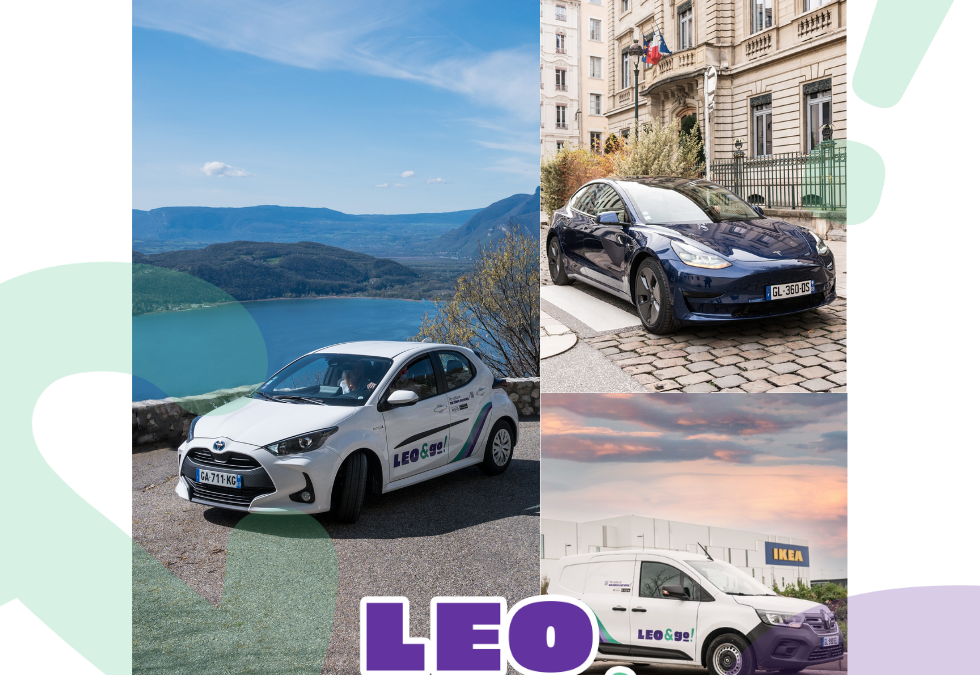Vulog’s very own expert in the field, Monica Wejman, has the answers to the top 5 Questions every city-dweller has about bike sharing.
TORONTO. June 4, 2021 As the need for efficient and more sustainable commuting increases, city-dwellers are ditching the gas-guzzling vehicles and exploring eco-friendly forms of transport to get around, especially bikes! And as the push for sustainability continues to be a top priority across all sectors (from automotive to energy to insurance and more!) the bike sharing industry continues to gain momentum worldwide.
International Bike Week may be just seven days out of the year, but the boom is here to stay! So whether you’re a private individual thinking about switching over to bike sharing or an operator looking to expand your market reach, we’ve got some answers to your burning questions. Vulog’s bike expert, Monica Wejman, addresses the top 5 questions about bike sharing that a city-dweller might have. So get ready, and enjoy the ride!
1. Do I need to be tech-savvy to bike share?
Absolutely not! For starters, how does bike sharing work? Essentially you’re renting a bike located near you via your smartphone. Bike share companies have various forms of accessibility in place ready for you. Long-term memberships or daily, weekly, single trip purchases can be made through kiosk screens located at bike stations, through apps, or even directly through the service’s website. Buying a pass, hopping on, and riding is as easy as 1, 2, 3!

In many ways, technology is actually making our lives easier, especially when it comes to transportation. And so as long as you’ve got a smartphone, you can unlock and ride an e-bike in hundreds of cities across the globe. Even traditional ride-hailing companies, like Bolt and Uber, who originally started off with cars are keenly aware of their users’ growing expectations, which is why they have integrated bike sharing into their offer. Other players like Lime have also branched out to include bike sharing to cover more use cases. Decisions like this mean your mobility options stay open while industry players stay competitive.
In many cities, players within this dynamic environment are even consolidated into single mobility platforms known as MaaS (Mobility as a Service) aggregators to help users save time and money. These platforms, like CityMapper, make it easy for users to combine a city’s various sustainable transportation options, including bike sharing, to complete a single trip in the most efficient and affordable way possible. So many options are right at your fingertips, literally!

So don’t be intimidated by the thought of embarking into this new bike sharing world. Embracing e-bikes has never been easier as they are incredibly user and environmentally friendly. Now’s the time to join the e-bike revolution!
2. Can bike sharing eliminate the “first and last-mile” problem in urban development?
The use cases for public bike share systems are exhaustive, so yes! They can absolutely be used to solve the first and last-mile challenge in urban settings. They are intended to get from point A to point B in urban environments and assist the end-user with full journey coverage. The most robust public bike share systems provide access to a station every 200-300 feet, meaning wherever you are in a city, there’s a bike share station within a 3-5 minute stroll.
It’s pretty common for people to not live within walking distance from their closest station or bus stop, forcing them to rely on their private car for a portion of their journey. One key solution to addressing the first and last leg is encouraging micro-mobility options. But of course, this needs to be an effortless part of a user’s journey.
Bike Share Toronto has addressed this dilemma straight-on. Implementing 24/7 convenient access to a fleet of nearly 7000 bikes to residents and surrounding communities across 200 kilometers is a perfect solution to Canadians’ first and last-mile problem. Not only does this solve a challenge that local governments have been struggling to fix for years, but it also inspires users to try out new and sustainable ways to start and finish their journey.

Bike sharing companies do, indeed, solve headaches for users and have proven that, yes, it is possible to fill the first and last-mile gap. So city-dwellers, don’t be afraid to ditch your car, spice up your routine, and try out bike sharing to get to your destination!
3. Should I ride an (electric) e-bike or a conventional bike?
Electric or conventional? That is the big question. Most bike share systems with a long-standing history will provide conventional pedal bikes and electric-assist bikes. There is no right or wrong decision on which bike to choose, yet the bike type you do decide to go for will depend on several variables 1. Availability of electric/conventional bikes from your starting point. 2. Your trip distance. 3. Your desire to work up a sweat. 4. Electric bike regulations in your city.

If you haven’t thrown on your helmet yet and are scratching your head on which bike is for you, let’s take a look at Paris, which has been hailed as one of the bike sharing capitals. Vélib, Paris’ large-scale bike sharing system, provides both conventional bikes and electric bikes. The green Vélib is Paris’ conventional pedal bike, and the blue version is electric. Both can be parked at any Vélib docking station, so picking up and dropping off both bikes is a breeze.

So which bike is right for you? You decide! If you don’t want to arrive at work looking like a hot mess, the electric bike could be the right fit, as hills are easy to combat whilst shortening the time of your journey. On the other hand, if you’re looking to burn calories and order that extra side of fries, then a conventional bike could be your vibe! No matter if you choose a conventional or electric bike, both address numerous use cases for busy city-hustlers.
4. Just how accessible and equitable is bike sharing, really?
Bike sharing is arguably the most accessible and equitable mobility option for all communities in a city! It is way more affordable for low-income communities, who often have fewer affordable mobility options available to them in the first place. City dwellers – but also residents in nearby suburban areas – find that switching to bike sharing companies helps bring down their overall transportation costs while increasing efficiency in their daily commutes. It sounds like a pretty sweet deal, right? It really is!
Many operators are taking concrete action to become more inclusive such as Seattle’s Free-Floating Bike Share program. The program essentially ensures that its services are equitably marketed and operated. So what does this mean? Lower-cost fares, increased bike access across ‘equity focus areas’, and even translations of rider materials, beyond just English. And in compliance with new government policies, operators are distributing their fleets more evenly across all areas of cities, including low-income communities, so that bike sharing can be accessed fairly by all!
Who would’ve thought that bike sharing could have such a big societal impact! Can you imagine the opportunities that widespread bike sharing adoption could bring? The options are endless!
5. When it comes to parking my bike, what are my options?
Just like with any vehicle, you still need to park your bike! You will want to map out your trip to know which bike station is closest to your final destination. When unlocking your bike, don’t forget to check the docking point availability at your preferred end station, which can be done easily via the bike sharing app. Having a backup end station in mind is essential just in case your preferred station fills up during your journey. For your convenience, the bike share app will provide you with live details on bike & dock availability at stations in your proximity. Plus, docking a bike at a bike share station eases many of the concerns surrounding bike theft in major cities.
Ready to get riding? One last thing – to ensure you’re parking in the correct spot, let’s go over your options. Is your bike sharing service of choice free-floating or station-based? A free-floating service means that bikes are scattered across the city, so you can pick one up and drop it off whenever and wherever you please. The geolocation system also detects the closest available bike to you, making it super convenient! A station-based service is the traditional use case for renting a bike. This means that you need to pick up and leave your bike at one of the service’s docking stations; you can’t just park your bike on the streets as you would with free-floating. By dropping off a station-based service bike correctly at one of its docking stations, your trip officially comes to an end and you avoid incurring unwanted fees.

An example of a popular station-based bike service is JOCO, NYC’s innovative station-based bike sharing company. Instead of clogging up city sidewalks and streets, JOCO’s e-bikes have taken a unique approach to parking their e-bikes by stationing them on private property, such as parking spaces belonging to offices, hotels, and even apartment buildings. Through this groundbreaking approach, JOCO is pioneering collaborations between the public and private sectors to meet city dwellers’ mobility needs as well as those of local city officials. The added security of private parking also means bikes are more likely to stay clean, safe, and in prime working condition. The result? Happy users and operators!

Not only is it essential to be a smart rider, but it also is essential to be a smart parker. So now that you know all your options for parking, rest assured you won’t run into any mishaps. All you have to do now is grab your helmet and find the closest bike!
Now that you have the bike sharing answers, are you ready to hop on a bike?
Technology has brought us to a crossroads with transportation – do we really want to keep up our old habits and travel in inconvenient, non-environmentally-friendly ways? Or do we want to travel more efficiently, conveniently, and sustainably?

As a city-dweller, getting around can certainly be testing at times: with the increase of congested roads, commuting time, and the complicated logistics of getting from Point A to Point B, moving about can be challenging if you opt for your privately-owned vehicle. With, of course, the added bonus of finding parking at a fair rate…if you can even find a spot! Plus, for city-dwellers concerned about getting their personal bike stolen, bike sharing systems offer peace of mind by virtue of their high-security tech and locking systems. For all of these reasons, bike sharing demand has skyrocketed as it climbs the ranks of city dwellers’ top choice for travel.
Beyond simply being trendy, bike sharing companies play an important role in transforming old mobility habits, solving congestion problems in cities, and overall, making everyone’s daily lives easier and more pleasant. They’re here to stay, so why not try it out for yourself? It’s time to jazz up your commute and feel the wind in your hair after being cooped up inside all year long!
Want to learn more about the bike sharing industry or how to start your own service? Send us a message!
Vulog, the world’s leading tech mobility provider, is proud to power JOCO, an electric bike sharing service operating in New York City. JOCO’s mission is to merge sustainability and convenience while bringing joy back to one’s commute.




